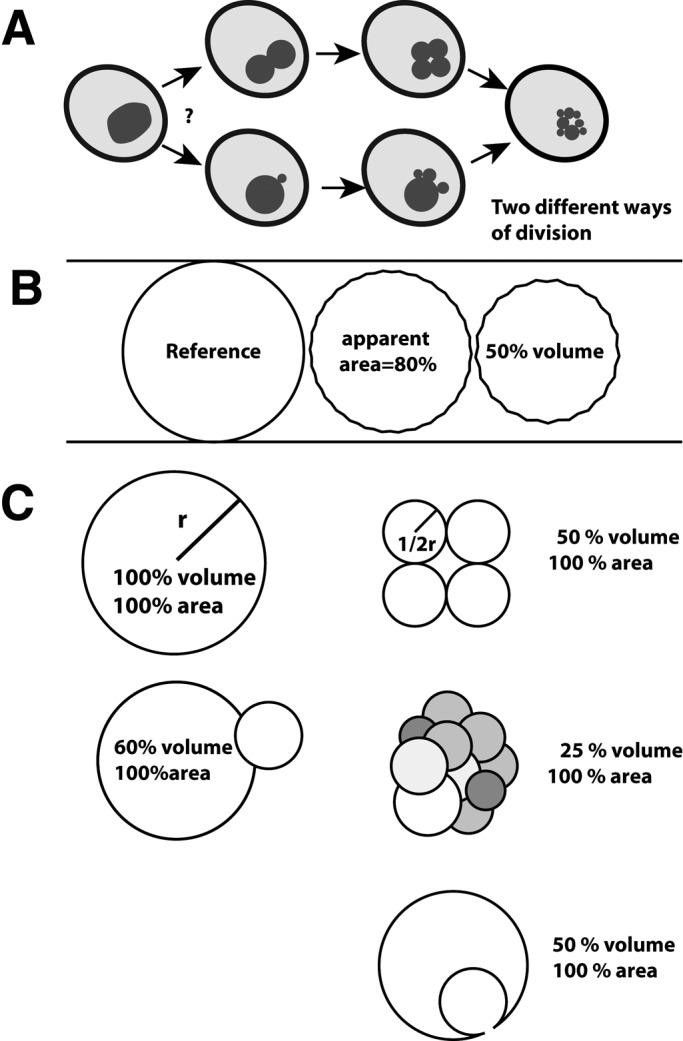FIGURE 1:

Examples of vacuolar morphologies and their surface-to-volume ratios. (A) Schematically drawn yeast cells illustrating symmetrical or asymmetrical vacuole division. (B) Relations between surface area, volume, and diameter. The three vesicles have the same surface. Membrane shriveling can reduce the surface area visible in the microscope because the shrivels cannot be resolved. (C) Adaptation of the surface-to-volume ratio by division of spheres into equal-sized or unequal vesicles or by internalization of a vesicle.
